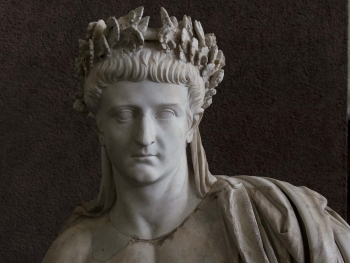The Crown of Thorns, a symbol of suffering and humiliation, holds a central place in Christian theology as a poignant reminder of the events leading to the crucifixion of Jesus Christ. This article delves into the profound journey of the Crown of Thorns, exploring its historical context, religious significance, and the transformative symbolism that has resonated through centuries.
I. Historical Context: The Path to Calvary
The Crown of Thorns finds its origin in the biblical account of the Passion of Christ. According to the New Testament, a crown made of thorns was mockingly placed on Jesus' head by Roman soldiers during the events leading up to his crucifixion. This act, intended as a cruel mockery of his claim to kingship, became a symbol of the immense suffering endured by Jesus on his path to Calvary.
II. Symbol of Suffering and Humiliation
The Crown of Thorns represents the physical and emotional torment inflicted upon Jesus in the final hours of his life. The sharp thorns piercing his flesh symbolize the pain, humiliation, and rejection he endured for the sake of humanity. This symbol of suffering has become an enduring emblem of Christ's sacrificial love and the redemptive power of his crucifixion.
III. Relics and Veneration
Over the centuries, relics believed to be fragments of the Crown of Thorns have been preserved and venerated by Christians. The most notable relic is housed in the Notre-Dame Cathedral in Paris. This relic, along with others distributed to various churches, serves as a focal point for devotion and pilgrimage. Pilgrims and believers view these relics with reverence, connecting with the tangible remnants of the suffering endured by their Savior.
IV. Transformative Symbolism: From Humiliation to Honor
Despite its origins in an act of mockery and humiliation, the Crown of Thorns has undergone a transformative journey in Christian theology. It has become a symbol not only of Christ's suffering but also of the victory over sin and death achieved through the resurrection. The thorns, once instruments of pain, are now seen as symbols of the regal authority of Christ, transformed into a crown of honor.
V. Liturgical and Devotional Use
The Crown of Thorns plays a significant role in Christian liturgy, especially during the season of Lent and Holy Week. In some traditions, replicas of the Crown are used in processions and liturgical rites to reenact the events of the Passion. Devotional practices, such as the Stations of the Cross, often highlight the Crown of Thorns as a meditation point, inviting believers to reflect on the transformative power of Christ's sacrifice.
VI. Artistic Representation: Depicting Divine Suffering
Artists throughout history have depicted the Crown of Thorns in paintings, sculptures, and religious iconography. These artistic representations aim to capture the emotional and spiritual dimensions of Christ's suffering. The Crown, often depicted with drops of blood, serves as a powerful visual reminder of the depth of God's love manifested through the crucifixion.
VII. A Symbol of Redemption
The Crown of Thorns, born from an act of cruelty, has transcended its origins to become a powerful symbol of redemption, transformation, and divine love. It invites believers to contemplate the profound journey from humiliation to honor, from suffering to triumph. In this enduring symbol, Christians find a source of solace, inspiration, and a reminder of the transformative power of faith.




